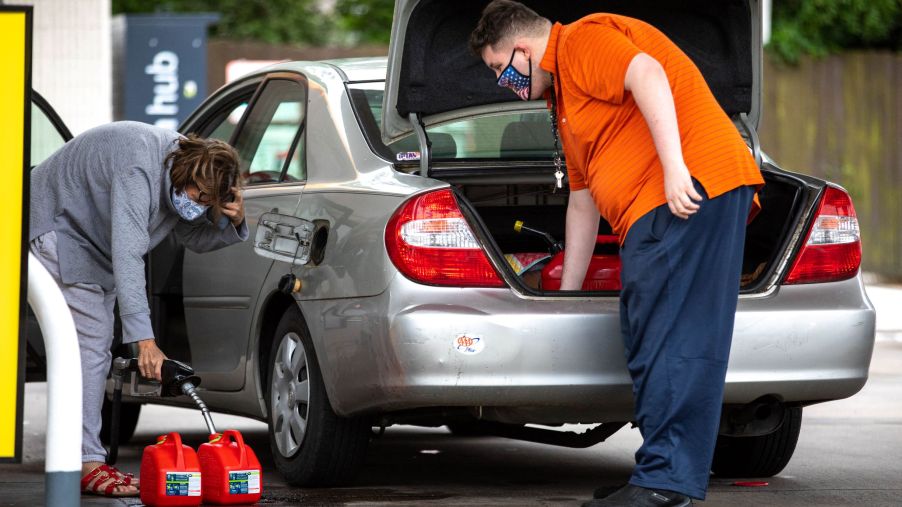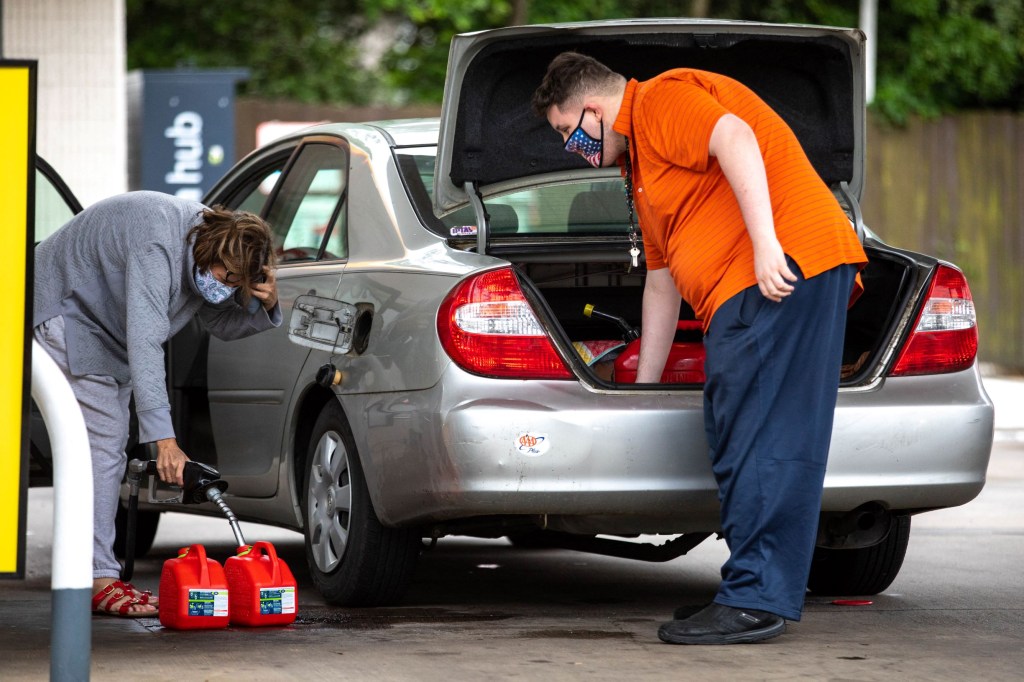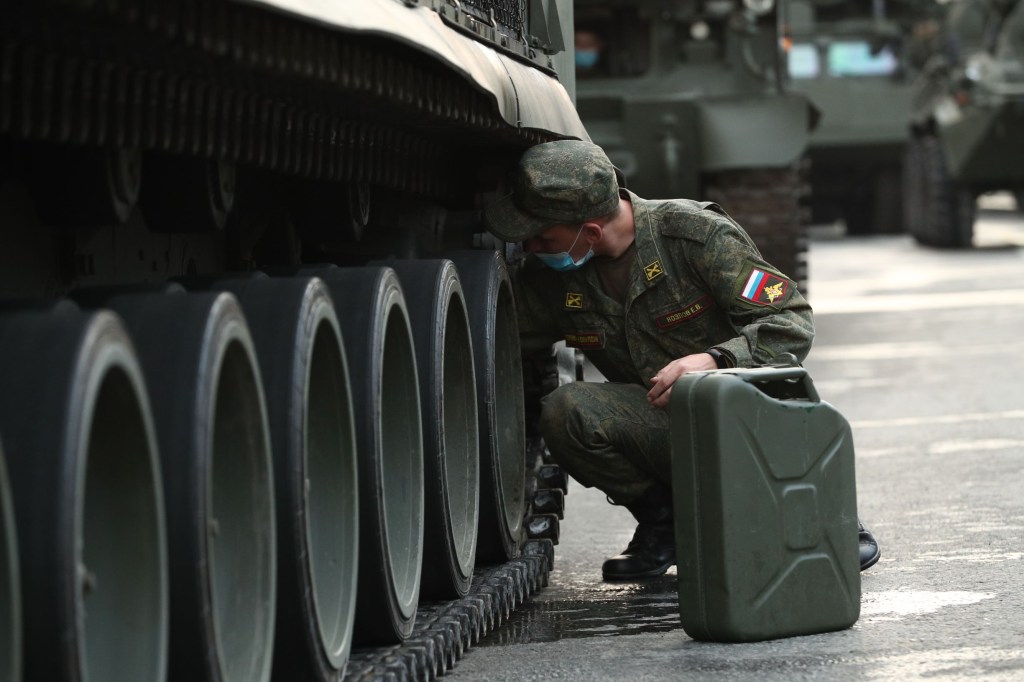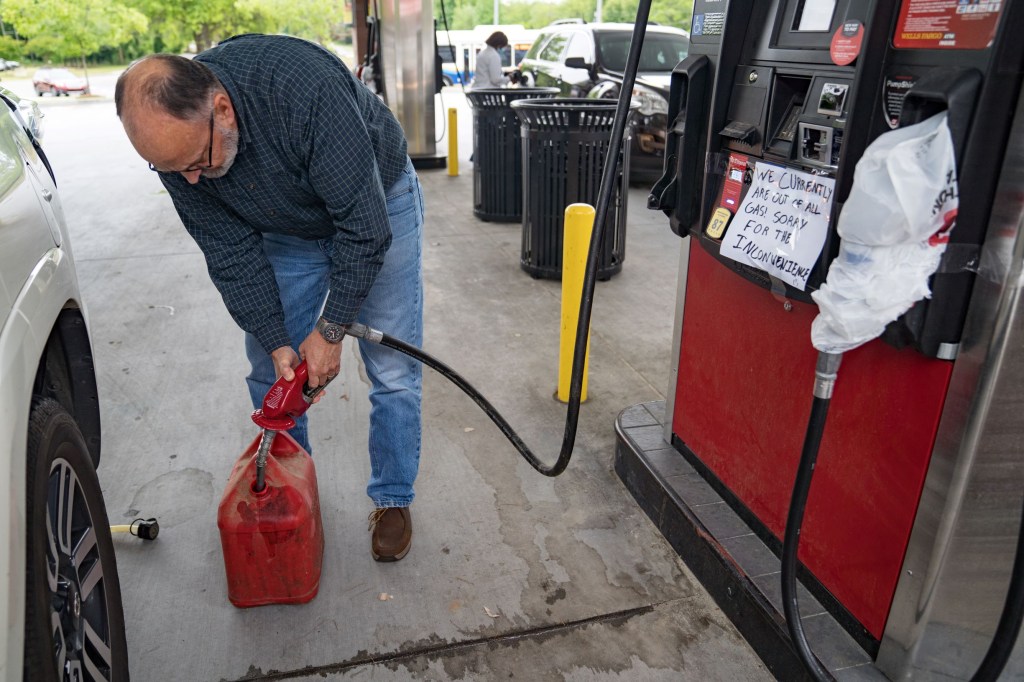
The Best Gasoline Storage Container? Definitely Not Plastic Bags
With drivers returning to the roads, experts predicted a shortage of gasoline come the summer. And one’s here—sort of. A recent cyberattack on the Colonial Pipeline created long lines at gas stations on the East Coast. And as in the COVID-19 pandemic’s toilet-paper-hoarding days, people scrambled to buy as much gas as possible. But in doing so, they often turned to extreme and sometimes improvised gasoline storage methods. And at least one car ended up in flames.
Don’t use plastic bags for gasoline storage purposes

Before explaining what prompted the US Consumer Product Safety Commission to tweet about plastic bags, here’s the situation about the gas crisis.
Firstly, there originally wasn’t one, MotorTrend explains, until buyers started panicking and buying up gasoline. And secondly, the Colonial Pipeline is now up and running, Autoblog reports. It will naturally take some time before its stock refills East Coast stations. But it’s not like the pipeline was the only supply point, to begin with.
To get back to the plastic bags, when news of the pipeline ransomware attack hit, panic-buying and gasoline hoarding started. And one image, or rather, one video that went viral showed a driver using plastic bags as gasoline storage. The imagery was so widespread that the US CPSC tweeted out the blunt message shown above: “Do not fill plastic bags with gasoline.”
As it turns out, the viral video wasn’t actually from 2021, The Drive reports. Instead, the video was taken in Houston, Texas, in 2019. And Snopes found another image of plastic bags as gasoline storage containers that, despite the caption “United States gas shortage: Circa 2021,” was taken in Mexico in 2020.
In short, no one is necessarily using plastic bags as improvised gas cans right now. But that absolutely doesn’t mean they should. Besides being flammable, gasoline also dissolves and eats through certain plastics, Cnet explains. Gasoline fumes are also a health hazard in their own right, so don’t use plastic buckets, either, The Drive chides.
Some gas cans are metal, some are plastic, but they’re designed to hold gasoline

The best gasoline storage containers are those specifically designed for the job, the NASD explains. This typically means a gas can, or as it’s often referred to, a jerry can.
The original metal jerry can design dates back to WWII-era Germany, and quickly spread amongst the Allies once they got their hands on some examples, Hagerty reports. Why? Because it was better designed and more effective. It’s still in use around the world by both military personnel and civilians. And Wavian makes the NATO-spec gas can here in the US.
Although the first jerry can was made of metal, modern gas cans come in metal and plastic form. The latter material choice might seem odd given what was just mentioned about plastic bags. However, plastic gas cans aren’t affected by gasoline, so long as they’re stored properly, The Drive reports. If it bears a UL and/or an ASTM stamp, it’s an approved gas can, Outside explains.
Some people have used plastic soda bottles or empty bleach containers for gasoline storage, Cycle World reports, but those aren’t approved containers. But fuel bottles, such as those used to carry camping fuel, can work in a pinch, Motorcyclist reports. The downside is that, unlike proper gas cans, fuel bottles typically lack a built-in spout.
Whether you go for metal or plastic, there are numerous gas cans available for purchase these days. Besides the Wavian jerry can, The Drive, Overland Expo, and The Spruce variously recommend No-Spill, Eagle, Midwest Can, Rugged Ridge, and Rotopax. But some cans are designed for diesel or kerosene, rather than gas, so make sure you choose appropriately.
You need more than a proper container, though

However, having the right kind of gas can is just the first step. Proper gasoline storage also requires proper technique.
First, before filling any gas can up, ground yourself by touching metal to limit the possibility of a static-induced fire. And don’t smoke while filling up or have an open flame source. Next, make sure to fill the container when it’s on the ground. And only fill the gas can up to the indicated fill line, or about 95% full, Autoblog reports. Once the can is full, make sure it stays upright and securely in place.
It might be tempting to keep that gas can in your car in case of emergencies. However, unless you’re going off-road, that’s exactly what you shouldn’t do. For one, gasoline only has a shelf life of 3-5 months. Fuel stabilizers stretch that period out, but all gasoline eventually goes bad. And in a locked trunk heated by the sun it quickly evaporates, Car and Driver explains.
But more importantly, gasoline is flammable, as one unlucky Hummer owner discovered, The Drive reports. Even if it’s stored in approved gas cans, the fumes can quickly ignite. Instead of in your car, keep the containers in a cool area away from electrical equipment or heat/flame sources.
Follow more updates from MotorBiscuit on our Facebook page.


